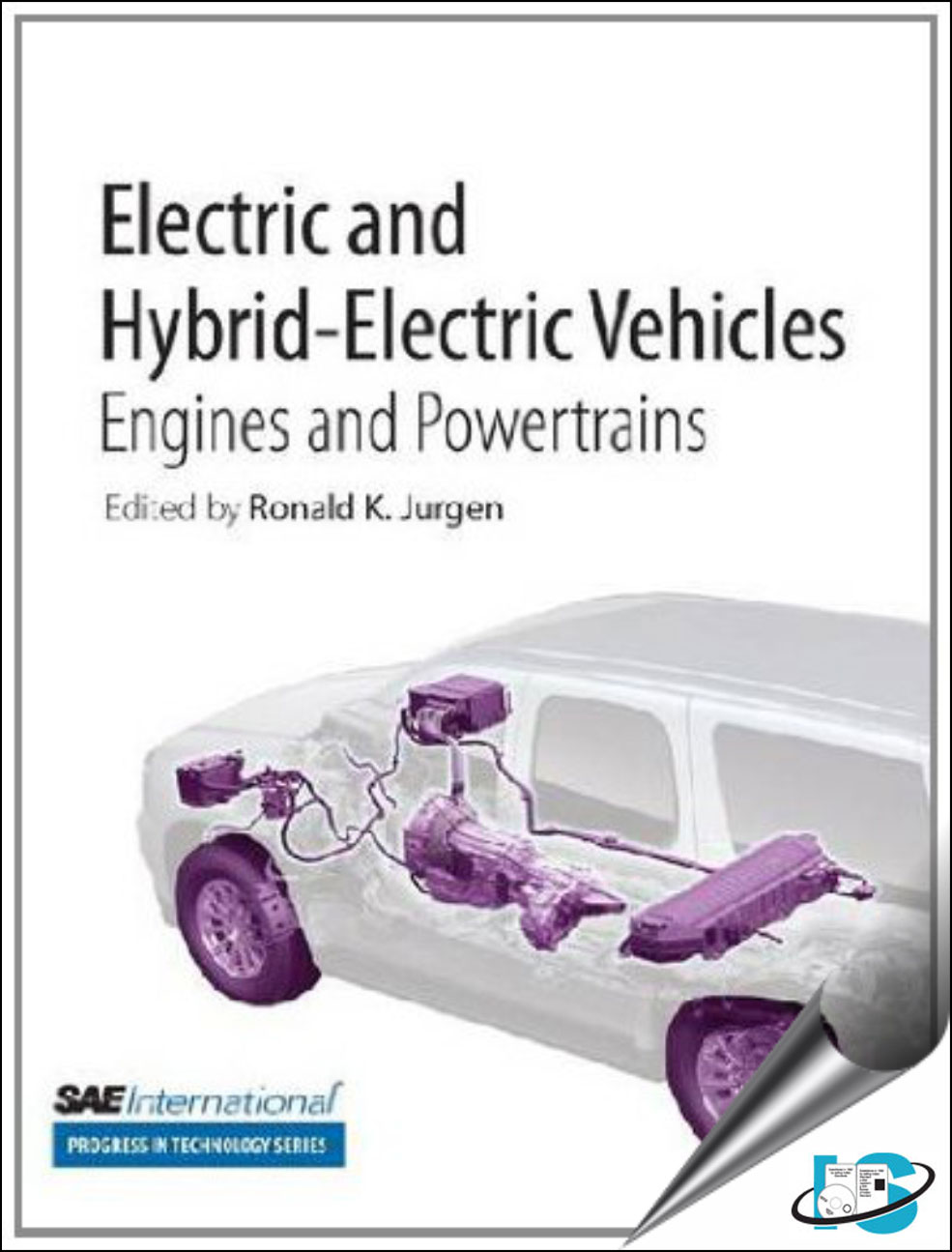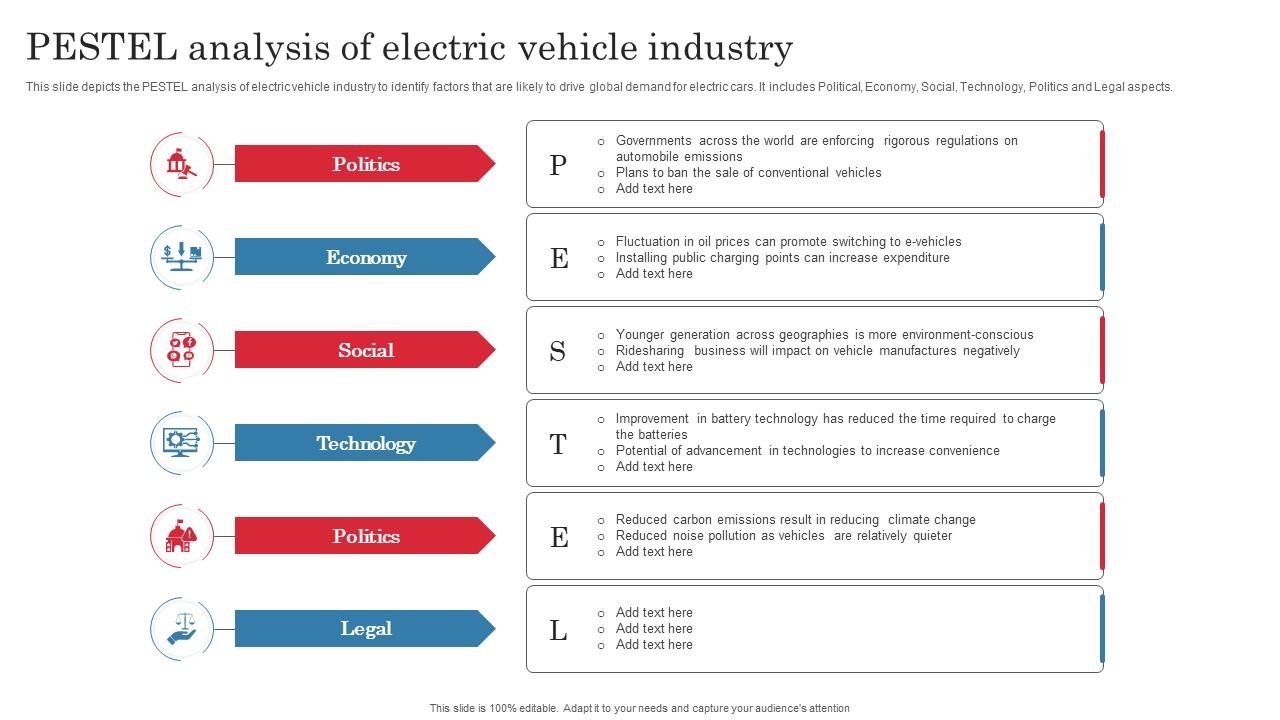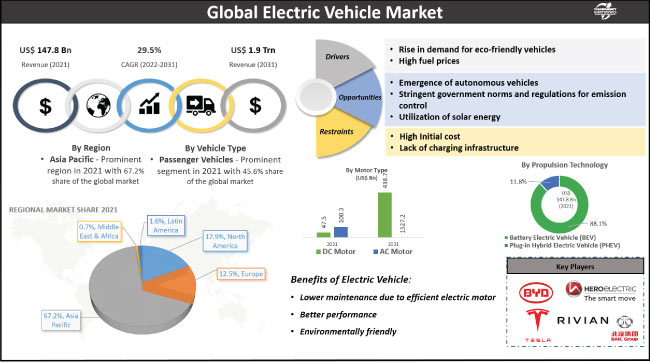Unlocking the Potential of Electric Powertrains
The demand for electric vehicles (EVs) is growing rapidly, driven by increasing concerns about climate change, air pollution, and energy sustainability. As the EV market continues to expand, the importance of electric motors in their design has become a key factor in determining their performance, efficiency, and overall cost. Electric motors are the heart of EVs, converting electrical energy into mechanical energy to propel the vehicle. A comprehensive analysis of electric vehicles and motors is essential to understand the competitive landscape of this emerging market.
This article provides an in-depth electric vehicle and electric motor competitive analysis, highlighting key players, technologies, and market trends. We will examine the significance of electric motor efficiency, compare different electric motor technologies, and analyze the EV market, including leading manufacturers and suppliers. Additionally, we will discuss the impact of charging infrastructure and government policies on the adoption of EVs.
The electric vehicle and electric motor competitive analysis will provide valuable insights into the current state of the market, emerging trends, and future opportunities. By understanding the complex relationships between electric motors, batteries, and charging infrastructure, we can unlock the full potential of electric powertrains and accelerate the transition to a more sustainable transportation system.
As the world shifts towards a low-carbon economy, the demand for EVs is expected to continue growing, driven by government policies, technological advancements, and declining battery costs. Electric motors will play a critical role in this transition, and a comprehensive analysis of their design, efficiency, and performance is essential to understand the competitive landscape of the EV market.
How to Evaluate Electric Motor Efficiency in EVs
Evaluating electric motor efficiency is crucial in electric vehicles (EVs) as it directly impacts their range, performance, and overall cost. Electric motor efficiency refers to the ability of the motor to convert electrical energy into mechanical energy, with minimal energy loss. In the context of electric vehicle and electric motor competitive analysis, understanding motor efficiency is essential to compare different EV models and technologies.
There are several key metrics to evaluate electric motor efficiency in EVs, including power density, torque, and thermal management. Power density refers to the motor’s ability to produce power relative to its size and weight. Torque, on the other hand, measures the motor’s rotational force, which affects the vehicle’s acceleration and performance. Thermal management is also critical, as excessive heat can reduce motor efficiency and lifespan.
To evaluate electric motor efficiency, manufacturers and engineers use various testing protocols, such as the Society of Automotive Engineers (SAE) J2908 standard. This standard provides a framework for testing and evaluating electric motor efficiency in EVs, including metrics such as power density, torque, and efficiency.
In addition to these metrics, other factors can impact electric motor efficiency, such as the type of motor used, the battery management system, and the vehicle’s overall design. For example, some EVs use advanced motor technologies, such as permanent magnet motors or switched reluctance motors, which can offer improved efficiency and performance.
By understanding and evaluating electric motor efficiency, EV manufacturers can optimize their designs, reduce energy consumption, and improve overall performance. This, in turn, can enhance the competitiveness of their products in the market, as consumers increasingly prioritize range, efficiency, and sustainability in their vehicle choices.
Comparing Electric Motor Technologies: Induction, Permanent Magnet, and Switched Reluctance
In the context of electric vehicle and electric motor competitive analysis, understanding the different electric motor technologies used in EVs is crucial. There are several types of electric motors used in EVs, including induction, permanent magnet, and switched reluctance motors. Each of these technologies has its advantages, disadvantages, and applications in various EV models.
Induction motors are widely used in EVs due to their simplicity, reliability, and low cost. They use electromagnetic induction to produce torque, and are commonly used in applications where high power density is not required. However, induction motors have lower efficiency and power density compared to other technologies.
Permanent magnet motors, on the other hand, use permanent magnets to produce torque, and are known for their high efficiency and power density. They are widely used in EVs that require high performance, such as sports cars and luxury vehicles. However, permanent magnet motors are more expensive than induction motors, and require complex control systems.
Switched reluctance motors are another type of electric motor used in EVs, which use a unique switching mechanism to produce torque. They are known for their high efficiency, reliability, and low cost, making them an attractive option for EV manufacturers. However, switched reluctance motors have lower power density compared to permanent magnet motors, and require complex control systems.
In the electric vehicle and electric motor competitive analysis, it is essential to evaluate the advantages and disadvantages of each electric motor technology, and their applications in various EV models. By understanding the strengths and weaknesses of each technology, EV manufacturers can make informed decisions about which motor technology to use in their vehicles, and how to optimize their designs for maximum efficiency and performance.
The choice of electric motor technology also depends on the specific requirements of the EV, such as its intended use, range, and performance. For example, EVs designed for long-range driving may require high-power density motors, while EVs designed for urban driving may require lower-power density motors.
Electric Vehicle Market Analysis: A Review of Leading Manufacturers
The electric vehicle (EV) market has experienced significant growth in recent years, driven by increasing demand for sustainable and environmentally friendly transportation options. In the context of electric vehicle and electric motor competitive analysis, it is essential to examine the market trends, sales, and key players in the industry.
Tesla is one of the leading manufacturers in the EV market, with a wide range of models available, including the Model S, Model 3, and Model X. The company has been at the forefront of EV technology, with a strong focus on electric motor innovation and battery development. Tesla’s electric motor technology is known for its high efficiency and performance, making it a leader in the industry.
Volkswagen is another major player in the EV market, with a range of models available, including the e-Golf and e-Up!. The company has made significant investments in EV technology, including the development of its own electric motor and battery systems. Volkswagen’s EV strategy is focused on providing affordable and sustainable transportation options to a wide range of customers.
Nissan is also a key player in the EV market, with its Leaf model being one of the best-selling EVs of all time. The company has a strong focus on electric motor innovation, with a range of technologies available, including its own electric motor and battery systems. Nissan’s EV strategy is focused on providing sustainable and environmentally friendly transportation options to customers around the world.
In addition to these leading manufacturers, other companies such as BMW, Hyundai, and Kia are also making significant investments in EV technology. The EV market is highly competitive, with a range of players vying for market share. In the context of electric vehicle and electric motor competitive analysis, it is essential to examine the market trends, sales, and key players in the industry to understand the competitive landscape.
The EV market is also influenced by government policies and regulations, including incentives, tax credits, and emissions standards. These policies can have a significant impact on the competitive landscape of EV manufacturers and electric motor suppliers, and are an important consideration in electric vehicle and electric motor competitive analysis.
Electric Motor Suppliers: A Competitive Analysis of Major Players
In the context of electric vehicle and electric motor competitive analysis, it is essential to examine the competitive landscape of electric motor suppliers. These companies play a crucial role in the EV industry, providing the electric motors that power the vehicles. In this article, we will evaluate the competitive landscape of major electric motor suppliers, including Nidec, Continental, and Siemens.
Nidec is a leading electric motor supplier, with a wide range of products available for various EV applications. The company has a strong focus on innovation, with a range of advanced electric motor technologies available, including permanent magnet and induction motors. Nidec’s electric motors are known for their high efficiency and reliability, making them a popular choice among EV manufacturers.
Continental is another major electric motor supplier, with a range of products available for EV applications. The company has a strong focus on electric motor innovation, with a range of advanced technologies available, including 48-volt mild hybrid systems and high-voltage electric motors. Continental’s electric motors are known for their high efficiency and performance, making them a popular choice among EV manufacturers.
Siemens is also a leading electric motor supplier, with a range of products available for EV applications. The company has a strong focus on electric motor innovation, with a range of advanced technologies available, including permanent magnet and induction motors. Siemens’ electric motors are known for their high efficiency and reliability, making them a popular choice among EV manufacturers.
In addition to these major players, other companies such as Bosch and ZF Friedrichshafen are also making significant investments in electric motor technology. The competitive landscape of electric motor suppliers is highly dynamic, with a range of players vying for market share. In the context of electric vehicle and electric motor competitive analysis, it is essential to examine the competitive landscape of electric motor suppliers to understand the opportunities and challenges facing the industry.
The partnerships between electric motor suppliers and EV manufacturers are also an important consideration in electric vehicle and electric motor competitive analysis. These partnerships can have a significant impact on the competitive landscape of the industry, with companies such as Tesla and Volkswagen forming close relationships with electric motor suppliers to develop advanced electric motor technologies.
Charging Ahead: The Impact of Charging Infrastructure on EV Adoption
The widespread adoption of electric vehicles (EVs) is heavily dependent on the availability and accessibility of charging infrastructure. In the context of electric vehicle and electric motor competitive analysis, it is essential to examine the current state of charging infrastructure and its impact on EV adoption. Charging infrastructure is a critical component of the EV ecosystem, enabling drivers to charge their vehicles conveniently and efficiently.
Fast-charging technologies have revolutionized the EV industry, enabling drivers to charge their vehicles to 80% in under 30 minutes. Companies such as Tesla, Volkswagen, and Nissan have invested heavily in fast-charging infrastructure, with a focus on providing convenient and efficient charging solutions for EV drivers. Fast-charging technologies have also reduced range anxiety, enabling drivers to travel longer distances without worrying about running out of charge.
However, the current state of charging infrastructure is still a major barrier to widespread EV adoption. Many countries lack a comprehensive network of charging stations, making it difficult for drivers to charge their vehicles on the go. Additionally, the cost of charging infrastructure is high, making it a significant investment for companies and governments.
Government policies and incentives have played a crucial role in promoting the development of charging infrastructure. Many governments have implemented tax credits and incentives to encourage companies to invest in charging infrastructure. Additionally, governments have implemented regulations to ensure that charging infrastructure is safe and efficient.
In the context of electric vehicle and electric motor competitive analysis, it is essential to examine the impact of charging infrastructure on EV adoption. Charging infrastructure is a critical component of the EV ecosystem, enabling drivers to charge their vehicles conveniently and efficiently. As the EV industry continues to grow, the development of charging infrastructure will play a crucial role in promoting widespread adoption.
The future of charging infrastructure is exciting, with many companies and governments investing in new technologies and innovations. Wireless charging, for example, is a technology that enables drivers to charge their vehicles without the need for cables or charging stations. This technology has the potential to revolutionize the EV industry, making it even more convenient and efficient for drivers to charge their vehicles.
Regulatory Environment: How Government Policies Shape the EV Market
The regulatory environment surrounding electric vehicles (EVs) is complex and multifaceted, with various government policies and incentives influencing the competitive landscape of EV manufacturers and electric motor suppliers. In the context of electric vehicle and electric motor competitive analysis, it is essential to examine the regulatory environment and its impact on the EV market.
Government incentives, such as tax credits and rebates, have played a crucial role in promoting the adoption of EVs. These incentives have encouraged consumers to purchase EVs, which has driven demand and stimulated growth in the EV market. Additionally, government incentives have encouraged EV manufacturers to invest in research and development, which has led to the development of new technologies and innovations.
Emissions standards are another critical aspect of the regulatory environment surrounding EVs. Governments around the world have implemented emissions standards to reduce greenhouse gas emissions and promote the adoption of cleaner vehicles. EVs are well-positioned to meet these emissions standards, as they produce zero tailpipe emissions and have a lower overall carbon footprint than traditional internal combustion engine vehicles.
The regulatory environment surrounding EVs is constantly evolving, with new policies and incentives being introduced regularly. For example, the European Union has implemented a new emissions standard, which requires all new vehicles to produce zero emissions by 2035. This standard has significant implications for EV manufacturers and electric motor suppliers, as it will drive demand for EVs and stimulate growth in the EV market.
In the context of electric vehicle and electric motor competitive analysis, it is essential to examine the regulatory environment and its impact on the EV market. Government policies and incentives have a significant influence on the competitive landscape of EV manufacturers and electric motor suppliers, and understanding these policies is critical for making informed investment decisions and developing effective business strategies.
The regulatory environment surrounding EVs is also influenced by international agreements and standards. For example, the Paris Agreement has set a global target to limit greenhouse gas emissions and promote the adoption of cleaner vehicles. This agreement has significant implications for EV manufacturers and electric motor suppliers, as it will drive demand for EVs and stimulate growth in the EV market.
Conclusion: The Future of Electric Vehicles and Motors
The electric vehicle (EV) market is rapidly evolving, driven by advances in electric motor technology, improvements in battery efficiency, and increasing demand for sustainable transportation solutions. In the context of electric vehicle and electric motor competitive analysis, it is essential to summarize the key findings of this comprehensive analysis and discuss the future outlook for EVs and electric motors.
The competitive landscape of EV manufacturers is highly dynamic, with companies such as Tesla, Volkswagen, and Nissan leading the charge. These companies have made significant investments in electric motor technology, battery development, and charging infrastructure, which has driven growth in the EV market.
The electric motor suppliers market is also highly competitive, with companies such as Nidec, Continental, and Siemens providing high-quality electric motors to EV manufacturers. These companies have made significant investments in research and development, which has led to the development of new electric motor technologies and innovations.
The regulatory environment surrounding EVs is complex and multifaceted, with government incentives, tax credits, and emissions standards influencing the competitive landscape of EV manufacturers and electric motor suppliers. Understanding these policies is critical for making informed investment decisions and developing effective business strategies.
Looking ahead, the future of EVs and electric motors is bright, with emerging trends, technologies, and opportunities on the horizon. Advances in electric motor technology, improvements in battery efficiency, and increasing demand for sustainable transportation solutions will drive growth in the EV market.
In the context of electric vehicle and electric motor competitive analysis, it is essential to stay informed about the latest developments and trends in the EV market. By understanding the competitive landscape, regulatory environment, and emerging trends, companies can make informed investment decisions and develop effective business strategies to succeed in the EV market.







